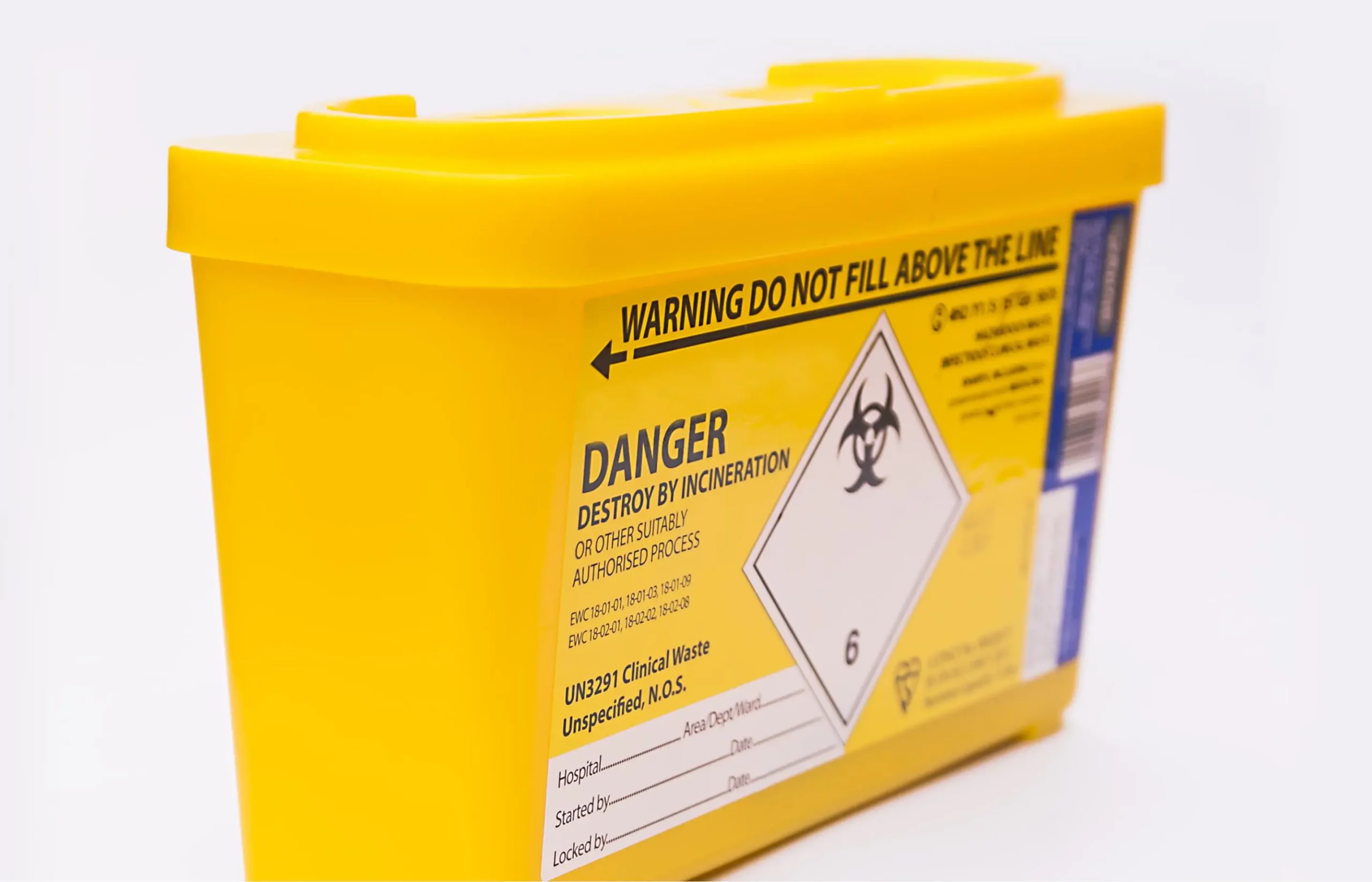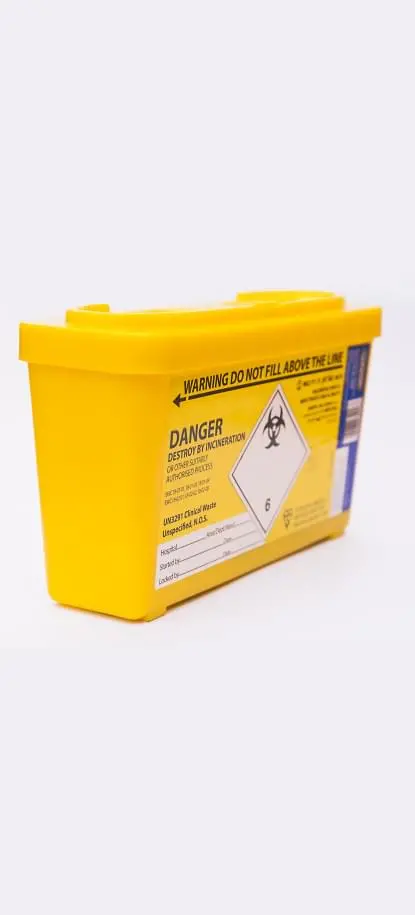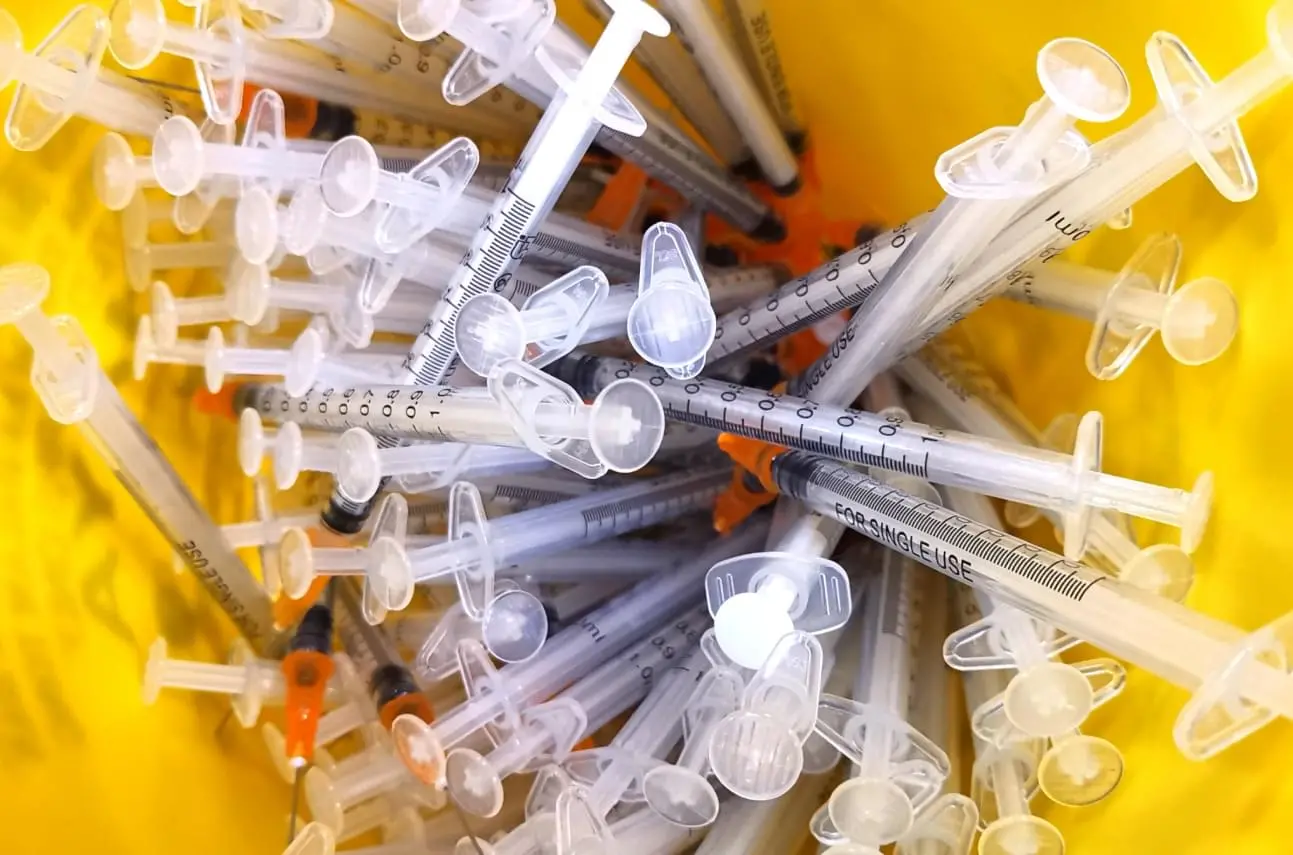




Quick Links:







Sharps are considered to be any object that can cut or puncture the skin
Depending on the use, sharps can be contaminated with biological or chemical agents which has the potential to cause harm if it punctures the skin. Safety precautions are necessary to prevent injury and exposure.
Sharps are considered to be any object that can cut or puncture the skin. This includes:
Before using sharps in your procedures, consult with a colleague, principal investigator, or the Research Safety Team to determine if the use of sharps are needed. If sharps must be used, then consider using these safety engineered sharps:





Although these devices are built with safety in mind, the protection is meaningless if laboratory personnel are not aware of the safety mechanism so make sure to practice with the device before using it in experimental procedures.
ALL sharps, regardless of the type of sharps used, must be immediately placed in a sharps container after use. The sharps containers should be leak proof, puncture resistant, and autoclavable.